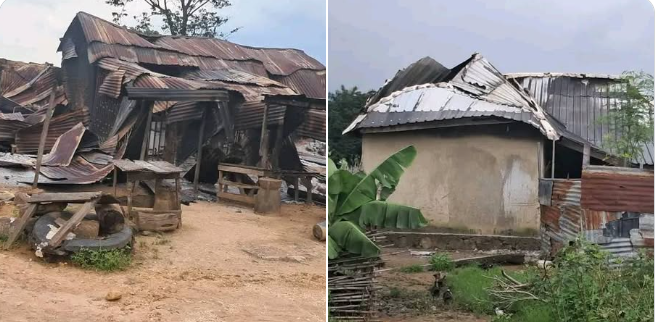Nigeria is a beautiful country endowed with many awe-inspiring natural attractions. The eye of our forefathers have gazed on them, our own eyes are now viewing them and after all these centuries, these natural wonders have not diminished their picturesque splendour.
7 Wonders of Nigeria
Spread across the length and breadth of Nigeria, here are 7 wonders of Nigeria.
1. Ogbunike Caves
The safety and refuge that the caves have provided across history are partly why they hold special importance to the indigenes of Anambra and the East of Nigeria. The Ogbunike caves are actually a system of many caves linked together by small, tunnels and passages. They take their name from Ogbunike, a town in Oyi Local Government Area of Anambra State where they are situated.
The main cave consists of a massive structure with a big open chamber of about 5m high, 10m wide and 30m long at the entrance.
Beyond their storied history as a place of refuge, the Ogbunike caves have an important spiritual heritage that dates back many years before the white man first set foot on African soil, to a time when they worshipped in its darkest recesses.
It is said that the Ogbunike caves were discovered by a man named Ukwa, from the Umucheke family of Ifite-Ogbunike, about 4000 years ago.
Legends claim that the caves were created by a deity, Ogba, who they believe lives within.
Within the caves, there is a large colony of harmless bats of various sizes that seem to stand as guardians of the structure.
The water around the caves is also thought to be divine. A stream flows out from one of the caves’ tunnels into River Nkissa, a rapidly flowing river at the foot of one of the caves’ exits.
Water drops perpetually from the roof of the caves at many points; spiritualists believe that it is healing water and many come to collect it for varying purposes.
2. Idanre Hills
Idanre hill is one of those rare places where beauty, mystery, and majesty speaks with the voice of silence.
The people of Idanre have existed for 800 years. For over 700 of those years, they lived in the hills. It wasn't until 1928 that they then moved to settle on ground level.
Also included among the remains of the ancient village are shrines, belfry, Agbooogun footprint, thunder water (Omi Aopara), old and dilapidated mud buildings roofed in rust-brown iron sheets, set on well laid-out streets and burial mounds and grounds, and the Owa's palace.
Spectacularly, the inner court of the palace is beautifully decorated with sculptural carvings used as pillars along the length and breadth of the court.
3. Mandara Mountains
Visit the Mandara Mountains which are a volcanic range extending about 190 km lie in the northeastern part of Adamawa state along the Cameroon border.
Mandara is an ideal place for rock and mountain climbing. The region is densely populated, mainly by speakers of Chadic languages, including both the Mofu and the Kirdi ethnic groups and it's totally Instagramable.
Lamurde hot spring in Adamawa is also part of the world popular Sukur Cultural Landscape, which consists of a palace, villages, and the remains of an iron industry.
The place was designated a UNESCO World Heritage site in 1999 and has since become a go-to tourist destination in Adamawa State.
4. Ikogosi Warm Spring
Unarguably, Ikogosi spring is a geological wonder. It is said to be the only one of its kind discovered anywhere in the world.
Ever fascinating as a result of its magical nature, the warm and cold springs of Ikogosi flow to a point where they meet, with each spring retaining its thermal identity.
The warm spring has a temperature of up to 70 degrees C at the source and 37 degrees C after meeting the cold spring.
As a matter of fact, the meeting point of the warm and cold springs never fails to mesmerize the roving minds of tourists.
5. Ado Awaye Suspended Lake
Ado Awaye lake is a geologic wonder and is popular for its awe-inspiring beauty. The fact that Ado Awaye is one of the only two Suspended Lakes in the whole world makes it an instant destination choice for tourists. The other suspended lake, Hanging Lake lies in Glenwood Canyon, Colorado.
The Ado Awaye lake is located on Iyake Mountains that sprawl around the sleepy town of Ado Awaye.
Locals claim the mountains were homes to immigrant Awori dwellers that chose the mountaintop as a refuge from rampaging Dahomey Armies in the 19th century.
Iyake Lake is the most prominent attraction on the mountains. It is a diameter shaped lake with green like water. No one knows the depth of the lake
6. Farin Ruwa Waterfalls, Nasarawa
Farin Ruwa Waterfalls is a captivating waterfall; tumbling 150 metres high and 50 metres wide creating a breathtaking natural spectacle.
The falls has its source on the Jos plateau, in the Bokkos Local Government Area of Plateau State. The falls, as a result of its white colour, appears in the distance to the inhabitants of the Farin Ruwa area like white smoke on the mountains. This white nature of the falls earned it the name Farin Ruwa from the inhabitants.
7. The Benin Moat
Part of the World’s largest and most ancient earthwork, a complex system of moats and ramparts spread over some 6,500 square kilometers. The Benin City Walls consist of a set of inner and outer interlocking rings originally built to delineate the royal precinct of the Oba, or king, from the surrounding area.
Built to an original height of more than 18 meters, and a length of 1,200 kilometers, the Iya was constructed in three stages. It was finalised around 1460, at that time being the world’s largest earthwork.
The earthworks attest the development of urbanization and rise of state societies in sub-Saharan Africa, a process that began in the seventh century a.d. and culminated in the founding of the Benin Kingdom of Bronze and Ivory in the fourteenth century.
The Benin City Walls were ravaged by the British in 1897. Since then, portions of the walls have gradually vanished in the wake of modernization—large segments cannibalized. However, significant stretches of the walls remain, enclosing innumerable red earth shrines and vernacular elite architecture with red-fluted walls.
Though the walls and moats have been protected by national legislation since 1961, no conservation plan exists. The earthworks need to be mapped and assessed, a public awareness campaign launched, and a plan for long-term management developed.
For any visit, nature is always more alive at the spring as the warm and cold water springs mesmerise visitors with their uniqueness, tranquility and aesthetic beauty.
Truly, the spring is so peaceful that you cannot wait to enjoy a cool dip in the naturally heated swimming pool. You have reasons to try out this wonder destination, next time you think vacation.
FAQs: Wonder Nigeria
1. Do I need a visa to travel to Nigeria?
Most foreign nationals traveling to Nigeria will require a valid visa to enter the country. Nigeria currently offers several types of visas for tourism and business. It is best to apply for a Nigerian visa through their official website at least 4 to 6 weeks before your trip. You will need to provide a photo, an official letter of invitation from a contact in Nigeria, a return flight ticket, and proof of sufficient funds for your trip.
2. Is Nigeria safe for tourists?
There are certain security risks to be aware
Style

.jpg)
.jfif)








